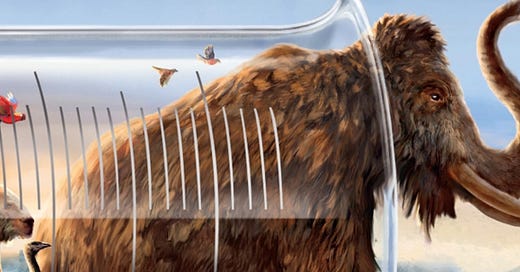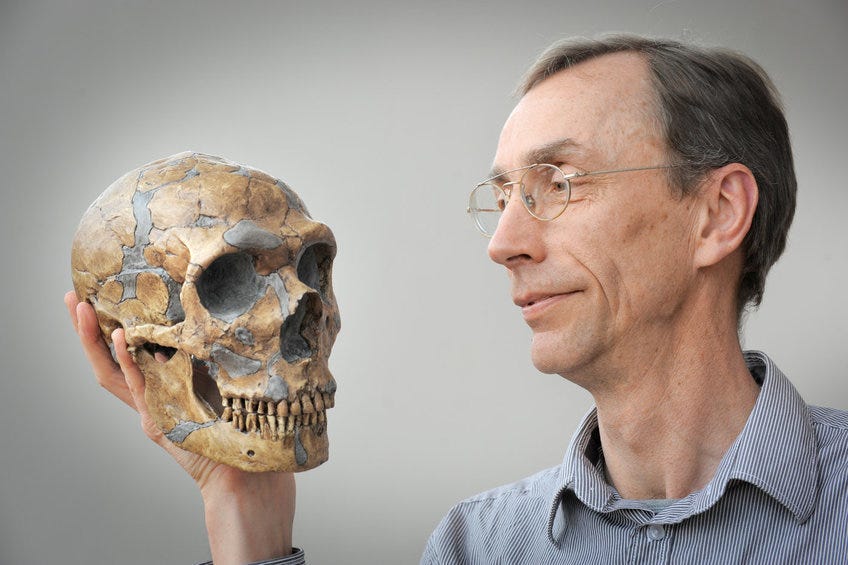Earth's history is a story of constant change. Species rise and fall, adapting (or failing to adapt) to an ever-shifting environment. Some species stand the test of time, while others fade into extinction. But what if we could turn back the clock and peer into the genetic makeup of these long-lost creatures? Thanks to advances in genomics, we can. Specifically, ancient DNA reveals the genomic legacy of extinct species.
The Ancient DNA Revolution
For centuries, the study of extinct species relied heavily on fossils and bones. While these remnants provide valuable information about morphology and behavior, they often leave gaps in our understanding of an organism's genetic makeup. Enter paleogenomics, a groundbreaking field that leverages advances in DNA sequencing technology to extract and analyze DNA from ancient remains.
Paleogenomics has transformed our ability to investigate extinct species. This technology allows scientists to extract and sequence DNA from specimens like mammoth tusks preserved in permafrost, Neanderthal bones in caves, and even ancient Egyptian mummies. This unlocks genetic information about creatures that roamed the Earth long before us.
Mammoths: Resurrecting the Ice Age Giants
The woolly mammoth is one of the most iconic extinct species to be studied through paleogenomics. By comparing the mammoth's DNA with that of its living relative, the Asian elephant, researchers hope to uncover the genetic basis for the mammoth's adaptations to cold environments. Moreover, this genetic knowledge could pave the way for efforts, with scientists considering resurrecting mammoths through advanced genetic engineering techniques. You can read more here from Colossal Laboratories & Biosciences.
Unraveling the Mysteries of Neanderthals
Neanderthals, our closest evolutionary cousins, disappeared from the Earth thousands of years ago. Paleogenomics has allowed scientists to reconstruct the Neanderthal genome, offering insights into their evolutionary history and interactions with Homo sapiens. By comparing Neanderthal DNA with that of modern humans, researchers have found evidence of interbreeding, revealing that many people today carry traces of Neanderthal genes. This genetic mingling holds clues about our shared past and the traits that distinguish us from our Neanderthal relatives. You can read more here from The Neandertal Genome Project.
Ancient DNA and Conservation
Beyond the realm of extinct megafauna and hominids, paleogenomics has significant implications for conservation efforts. It enables researchers to assess the genetic diversity of populations that are critically endangered today. By studying ancient DNA, scientists can determine the genetic health of populations and make informed decisions about breeding and reintroduction programs. You can read more here from Trends in Ecology and Evolution.
Ethical and Practical Considerations
While the possibilities unlocked by paleogenomics are thrilling, they also come with ethical and practical considerations. Questions about the ethics of de-extinction and the potential consequences of resurrecting extinct species must be carefully examined. Additionally, the delicate nature of ancient DNA requires meticulous handling and preservation to avoid contamination and degradation.
A Glimpse into the Past and the Future
The study of ancient DNA through paleogenomics is a testament to the power of genomics to transcend time and uncover the mysteries of Earth's history. From mammoths frozen in ice to Neanderthals in ancient caves, these genomic insights offer a glimpse into the past and inspire discussions about our future. As we navigate the ethical complexities and technological challenges of paleogenomics, we continue to unlock the secrets of extinct species and the genetic legacy they leave behind. It is a journey that reminds us of the interconnectedness of all life on Earth, past and present, and our responsibilities as stewards of this remarkable planet.






